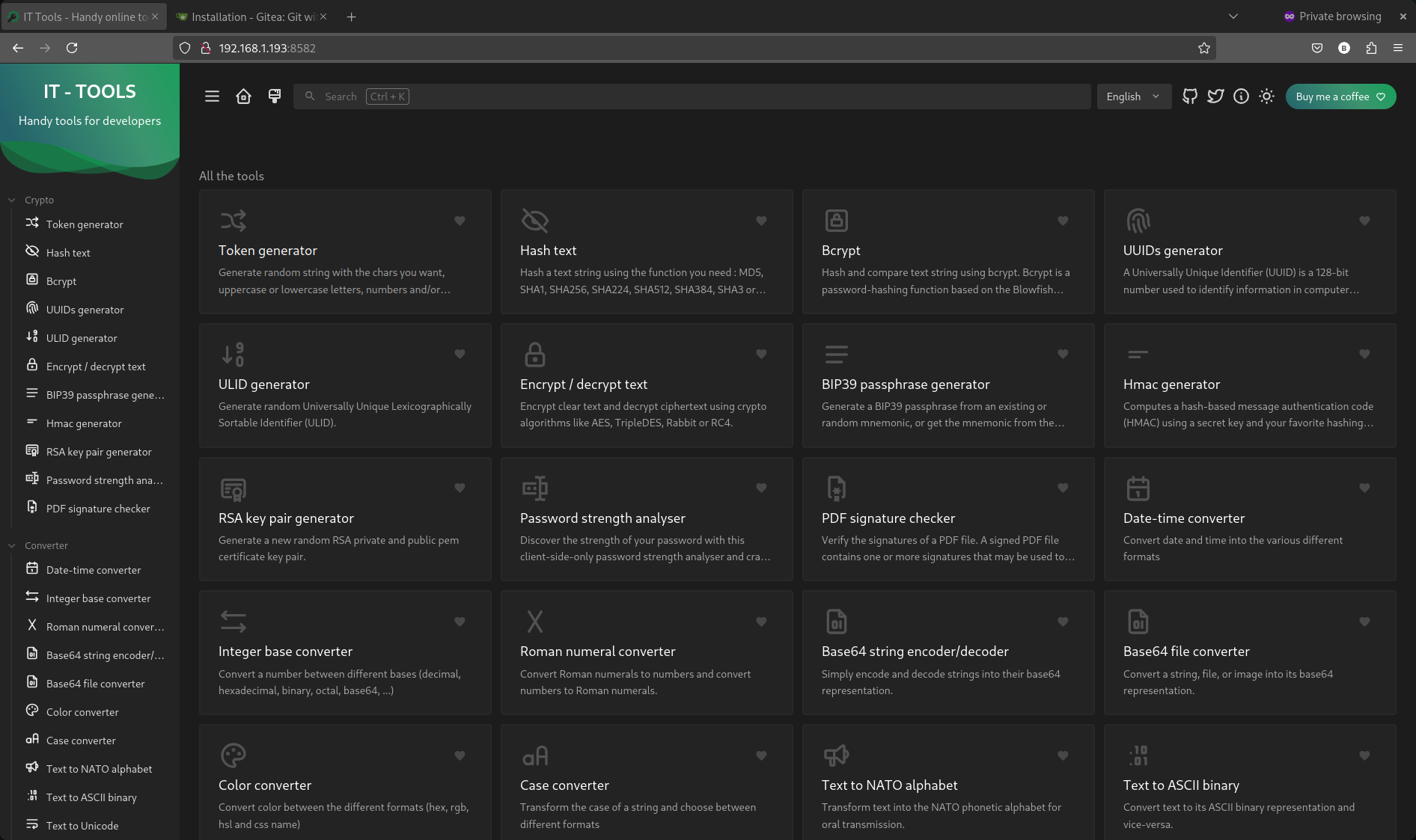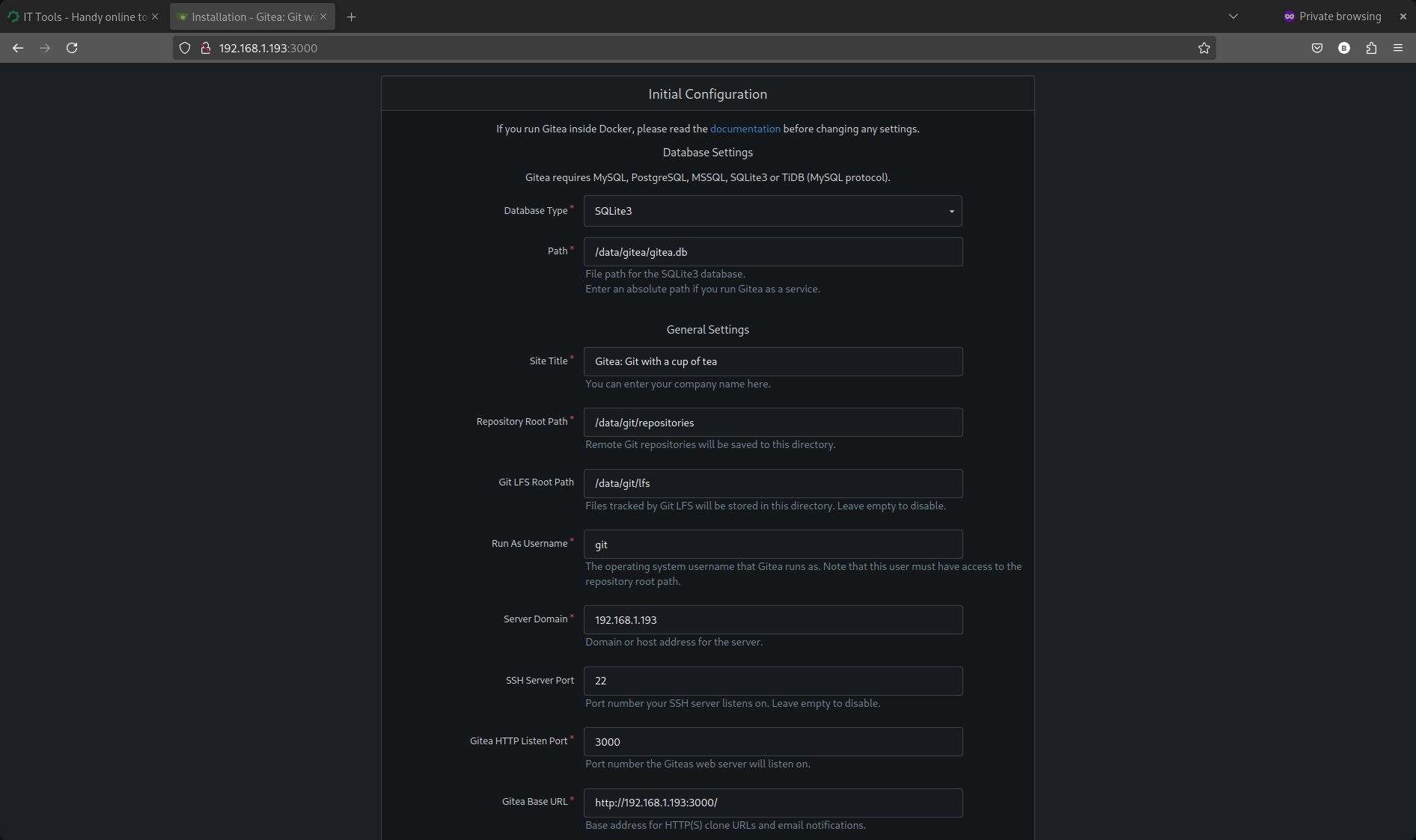Ansible Playbooks for Proxmox and LXCs Part 4
Ansible Playbooks for Proxmox and LXCs - Part 4#
I like to run stuff inside Docker (I know, some people have a visceral aversion to this. Whatever.), so in addition to the basic setup and tweaks, the most common thing I’m doing when I spin up a VM is going through the Docker setup process. I’ve done this so many times I think I could install Docker blindfolded at this point—so let’s automate things.
Jeff Geerling’s Docker Role#
There’s a cool YouTuber and blogger named Jeff Geerling who has already put together a a great role for installing Docker, so no need to reinvent the wheel (maybe I’m already doing that… honestly, I couldn’t find a good role for Proxmox).
Install the Role#
I put this in my bootstrap.yml, but you can just as easily install it manually.
ansible-galaxy role install geerlingguy.docker
Here’s my full bootstrap.yml of dependencies. I also added a task to make sure the community modules are up-to-date (I talked about this in part 2 the Ansible/Proxmox series).
---
- name: Bootstrap dependencies
hosts: localhost
connection: local
gather_facts: no
tasks:
- name: Install required Python libraries
ansible.builtin.pip:
name:
- proxmoxer
- requests
- passlib
state: present
- name: Upgrade community.general collection
command: ansible-galaxy collection install community.general --upgrade
changed_when: false
- name: Install required Ansible Galaxy role (geerlingguy.docker)
command: ansible-galaxy role install geerlingguy.docker
changed_when: false
Add Another Group#
I don’t want the Docker installation to be coupled to the install_extras flag, so I’m creating a separate group for this setup task.
- name: Add container to dynamic inventory for docker setup
add_host:
name: "lxc_{{ container.vmid }}_user"
groups: proxmox_containers_docker
ansible_host: "{{ container_ip }}"
ansible_connection: ssh
ansible_user: "{{ container.username | default('demo') }}"
ansible_ssh_private_key_file: "{{ container.private_key }}"
ansible_python_interpreter: /usr/bin/python3
path_to_compose_files: "{{ role_path }}/files/compose_files"
container: "{{ container }}"
ansible_become: yes
ansible_become_method: sudo
when: container.install_docker | default(false) and container.initial_setup | default(false)
Adding the path_to_compose_files value ended up being important for remembering the context of the role down the road. It was a big headache when I was trying to install containers within the LXC. That’s when I realized I should probably rethink the structure of this project (foreshadowing).
Add the Features Tag for LXC Creation#
We need to allow the create.yml script to accept the features tag as an LXC parameter. LXC’s need to have nesting enabled for Docker to run properly inside them (otherwise, it will fail when trying to access /proc due to permissions).
- name: Create LXC container on Proxmox
community.general.proxmox:
api_host: "{{ proxmox_api_host }}"
api_user: "{{ proxmox_api_user }}"
api_token_id: "{{ proxmox_api_id }}"
api_token_secret: "{{ proxmox_api_secret }}"
node: "{{ proxmox_node }}"
vmid: "{{ container.vmid }}"
hostname: "{{ container.hostname }}"
ostemplate: "{{ container.ostemplate }}"
storage: "{{ container.storage }}"
cores: "{{ container.cores }}"
memory: "{{ container.memory }}"
swap: "{{ container.swap }}"
disk: "{{ container.disk }}"
netif: '{"net0": "{{ container.net }}"}'
password: "{{ container.password | default(omit) }}"
onboot: "{{ container.onboot | default(false) }}"
startup: "{{ container.startup | default(omit) }}"
pubkey: "{{ lookup('file', container.pubkey_file) | default(omit) }}"
features: "{{ container.features | default(omit) }}" # Add this
state: present
In your lxcs.yml file, add features: "nesting=1" to the parameters that you pass when setting the LXC state to present.
Adding a Docker Install Play#
Add a play to your playbook with the appropriate flags—refer to Jeff’s documentation on GitHub for guidance on this. Here’s what I used:
- name: Run docker setup on provisioned containers
hosts: proxmox_containers_docker
gather_facts: yes
roles:
- role: geerlingguy.docker
vars:
docker_edition: 'ce'
docker_service_state: started
docker_service_enabled: true
docker_packages:
- "docker-{{ docker_edition }}"
- "docker-{{ docker_edition }}-cli"
- "docker-{{ docker_edition }}-rootless-extras"
docker_packages_state: present
docker_install_compose_plugin: true
docker_compose_package: docker-compose-plugin
docker_compose_package_state: present
docker_users:
- "{{ container.username | default('demo') }}"
Run your playbook and check the Docker and Docker Compose versions from within the VM to see if it installed correctly:
demo@test06:~$ docker --version
Docker version 27.5.1, build 9f9e405
demo@test06:~$ docker compose version
Docker Compose version v2.32.4
It’s truly that simple. Thanks, Jeff.
Creating Some Container Templates#
I want to automatically spin up some Docker containers using Compose files when I create my LXCs. I created a new directory in files called compose_files—this is where I’ll keep my Docker Compose manifests and their Jinja2 templates for the environments. For example:
IT Tools#
This container has a suite of useful tools for people who do IT stuff for a living and don’t want to use public sites (like jsonformatter.org, for example) that might be scraping your data—and filling your screen with ungodly amounts of ads.
docker-compose.yml#
---
services:
it-tools:
image: 'corentinth/it-tools:latest'
env_file:
- .env
ports:
- '${PORT}:80'
restart: unless-stopped
container_name: it-tools
.env#
# Environment variables for the IT Tools container
PORT={{ item.value.port }}
Gitea#
A useful self-hosted git repo.
docker-compose.yml#
---
services:
gitea:
image: 'gitea/gitea:latest'
restart: unless-stopped
volumes:
- '/mnt/md/data/gitea:/data'
- '/etc/timezone:/etc/timezone:ro'
- '/etc/localtime:/etc/localtime:ro'
env_file:
- .env
ports:
- '${PORT_HTTP}:3000'
- '${PORT_SSH}:22'
.env#
# Environment variables for Gitea
PORT_HTTP={{ item.value.port_http }}
PORT_SSH={{ item.value.port_ssh }}
Adding a Container Setup Script#
Let’s add a new script to roles/proxmox_lxc/tasks/compose_setup.yml.
---
- name: Create docker directory for each container
file:
path: "/home/{{ container.username | default('demo') }}/docker/{{ item.key }}"
state: directory
mode: '0755'
loop: "{{ container.docker_containers | dict2items }}"
loop_control:
label: "{{ item.key }}"
become: yes
become_user: "{{ container.username | default('demo') }}"
- name: Copy docker compose file for container "{{ item.key }}"
copy:
src: "{{ path_to_compose_files }}/{{ item.key }}.yml"
dest: "/home/{{ container.username | default('demo') }}/docker/{{ item.key }}/docker-compose.yml"
mode: '0644'
loop: "{{ container.docker_containers | dict2items }}"
loop_control:
label: "{{ item.key }}"
become: yes
become_user: "{{ container.username | default('demo') }}"
- name: Template .env file for container "{{ item.key }}"
template:
src: "{{ path_to_compose_files }}/{{ item.key }}.env.j2"
dest: "/home/{{ container.username | default('demo') }}/docker/{{ item.key }}/.env"
mode: '0644'
loop: "{{ container.docker_containers | dict2items }}"
loop_control:
label: "{{ item.key }}"
become: yes
become_user: "{{ container.username | default('demo') }}"
- name: Run docker compose up -d in container directory for "{{ item.key }}"
shell: "docker compose up -d"
args:
chdir: "/home/{{ container.username | default('demo') }}/docker/{{ item.key }}"
loop: "{{ container.docker_containers | dict2items }}"
loop_control:
label: "{{ item.key }}"
become: yes
become_user: "{{ container.username | default('demo') }}"
This will:
- Iterate through a dictionary called
docker_containersin your LXC manifest. - Create a directory in
~/docker/for each container. - Copy a
docker-compose.ymland.envfile into that directory. - Automatically pull and start the container using Docker Compose.
So, your LXC manifest should include a docker_containers parameter like this:
lxcs:
- vmid: 115
hostname: test06
username: demo
user_password: "demo123"
pubkey_file: "~/.ssh/nuc_rsa.pub"
private_key: "~/.ssh/nuc_rsa"
state: started
wait_for_status: true
get_ip: true
initial_setup: true
install_extras: true
install_docker: true
# The part below is new
docker_containers:
it-tools:
port: 8582
gitea:
port_http: 3000
port_ssh: 222
Updating and Running the Playbook#
Finally, add the following step to your playbook.
- name: Run docker container setup on provisioned containers
hosts: proxmox_containers_docker
gather_facts: yes
tasks:
- include_tasks: ../roles/proxmox_lxc/tasks/compose_setup.yml
Now run the playbook, and once it’s done, enter your container’s IP into a web browser with the :3000 and :8582 ports.


Closing#
It was at this point that I realized, “Hey, this works, but it is absolute nonsense.” By that, I mean things up to this point have been structured completely wrong. I spent an entire day trying to figure out where I went wrong—reading and watching tutorials. There is a core tenet of Ansible roles that frankly eluded me until now:
Do one thing and do it well.
So, dear reader, I know I said this would be my last post on this topic, but I’m going to guide you directly to part 5 where we will work on completely refactoring this mess and submitting it to Ansible Galaxy.